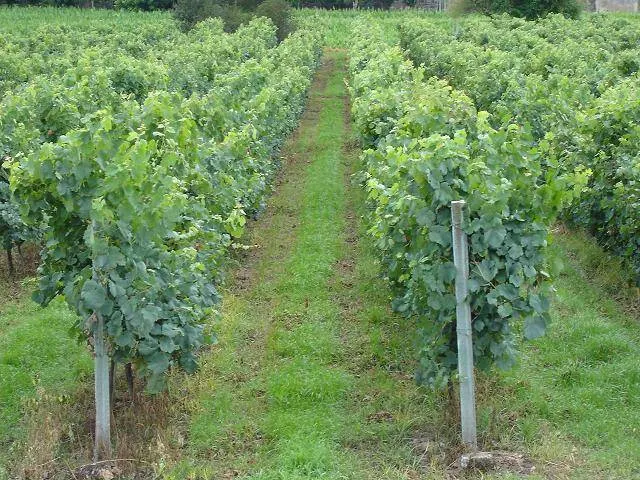A platform for the connoisseurs to indulge with the mesmerizing beverages and lip smacking global cuisines, access the information and review and interact at the same time. This is also a huge support tool for the Hospitality aspirants pursuing any Hotel Management Program or is a beginner with the Hospitality Industry.
Amazon
Monday, November 30, 2009
APPELLATION SYSTEM
The appellation system of the Douro region was created nearly two hundred years before that of France, in order to protect its superior wines from inferior ones. The quality and great variety of wines in Portugal are due to noble castas, microclimates, soils and proper technology.
vQuality Wine Produced in a Specific Region (QWPSR) or VQPRD - Vinho de Qualidade Produzido em Região Demarcada
v These are the most protected wine and indicates a specific vineyard, such as Port Wine, Vinhos Verdes, and Alentejo Wines. These wines are labeled D.O.C. (Denominação de Origem Controlada) which secures a superior quality.
v Wines that have more regulations placed upon them but are not in a DOC region fall under the category of Indicação de Proveniência Regulamentada (IPR, Indication of Regulated Provenance)
v Regional Wine - Vinho Regional Carries with it a specific region within Portugal.
v
GRAPE VARIETIES - PORTUGAL
Portugal possesses a large array of native varietals, producing an abundant variety of different wines. The wide array of Portuguese grape varietals contributes as significantly as the soil and climate to wine differentiation, producing distinctive wines from the Northern regions to Madeira Islands, and from Algarve to the Azores. In Portugal only some grape varietals or castas are authorized or endorsed in the Demarcated regions, such as:
Vinhos Verdes - White castas Alvarinho, Arinto (Pedern),Avesso, Azal, Batoca, Loureiro, Trajadura; red castas Amaral,Borraçal, Alvarelhão, Espadeiro, Padeiro, Pedral, Rabo de Anho, Vinhão.
Porto/Douro - Red castas Touriga Nacional, Tinta Amarela, Aragonez, Bastardo, Castelão, Cornifesto, Donzelinho Tinto,Malvasia Preta, Marufo, Rufete, Tinta Barroca, Tinta Francisca Tinto Cão, Touriga Franca; white castas Arinto, Cercial,Donzelinho Branco, Folgazão, Gouveio, Malvasia Fina, Moscatel Galego Branco, Rabigato, Samarrinho, Semillon, Sercial,Roupeiro, Verdelho, Viosinho, Vital.
Dão - Red castas Touriga Nacional, Alfrocheiro, Aragonez, Jaen e Rufete; White castas Encruzado, Bical, Cercial, Malvasia Fina, Verdelho.
Bairrada - Red casts Baga, Alfrocheiro, Camarate, Castelão, Jaen, Touriga Nacional, Aragonez; white castas Maria Gomes, Arinto, Bical, Cercial, Rabo de Ovelha, Verdelho.
Bucelas - White castas Arinto, Sercial e Rabo de Ovelha.
Colares - Red casta Ramisco; White casta Malvasia
Carcavelos - Red castas Castelão and Preto Martinho; White castas Galego Dourado, Ratinho, Arinto.
Setúbal - Red casta Moscatel Roxo; white casta Moscatel de Setúbal.
Alentejo - Red castas Alfrocheiro, Aragonez, Periquita1, Tinta Caiada, Trincadeira, Alicante Bouschet, Moreto; White castas Antão Vaz, Arinto , Fernão Pires, Rabo de Ovelha,Roupeiro
Algarve - Red castas Negra Mole, Trincadeira, Alicante Bouschet, Aragonez , Periquita; White castas Arinto, Roupeiro, Manteúdo, Moscatel Graúdo, Perrum, Rabo de Ovelha.
Madeira - Red castas Bastardo, Tinta, Malvasia Cândida Roxa, Verdelho Tinto e Tinta Negra; white castas Sercial, Malvasia Fina (Boal), Malvasia Cândida, Folgasão (Terrantez), Verdelho
WINES OF PORTUGAL
Portuguese wine is the result of traditions introduced to the region by ancient civilizations, such as the Phoenicians,Carthaginians, Greeks, and mostly the Romans. Portugal started to export its wines to Rome during the Roman Empire. Modern exports developed with trade to England after the Methuen Treaty in 1703. From this commerce a wide variety of wines started to be grown in Portugal. And, in 1758, the first wine-producing region of the world, the Região Demarcada do Douro was created under the orientation of Marquis of Pombal, in the Douro Valley. Portugal has two wine producing regions protected by UNESCO asWorld Heritage: the Douro Valley Wine Region (Douro Vinhateiro) and Pico Island Wine Region (Ilha do Pico Vinhateira). Portugal has a large variety of native breeds, producing a very wide variety of different wines with distinctive personality.
Thursday, November 26, 2009
Subscribe to:
Comments (Atom)
Is consuming Wine daily good for health?
The idea of consuming wine daily, particularly red wine, has been a topic of interest for many years, with some studies suggesting potentia...
-
Pot stills and patent stills are two different types of distillation apparatus used in the production of alcoholic beverages, particularly...
-
The quality of service staff in any establishment reflects the quality of the establishment itself. No matter how good the food and ambien...
-
1) The table on which a tablecloth is to be spread, should be first covered with a baize base cloth, for the following reasons: a. To pro...



